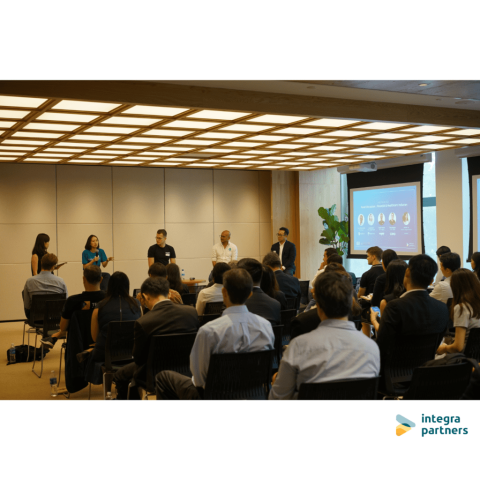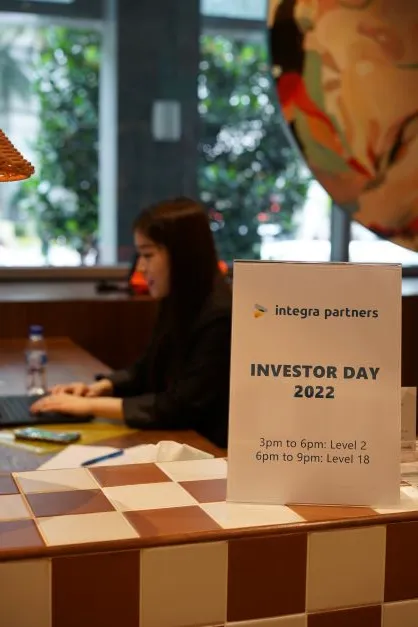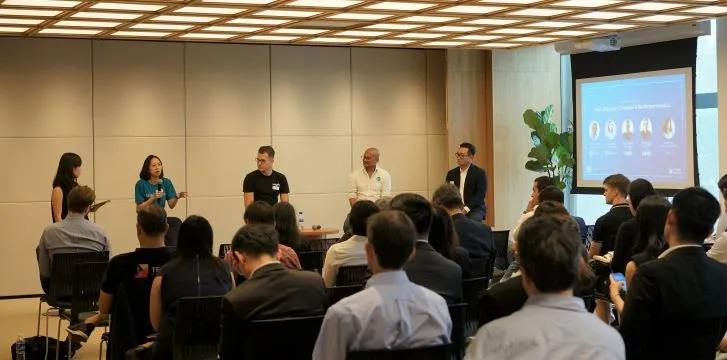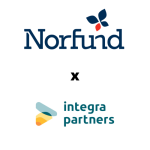
Norfund x Integra Partners
29 July, 2022
Integra Partners Launch Win With Women – New Regional Venture Partner Program to Empower Female Entrepreneurs
8 March, 2023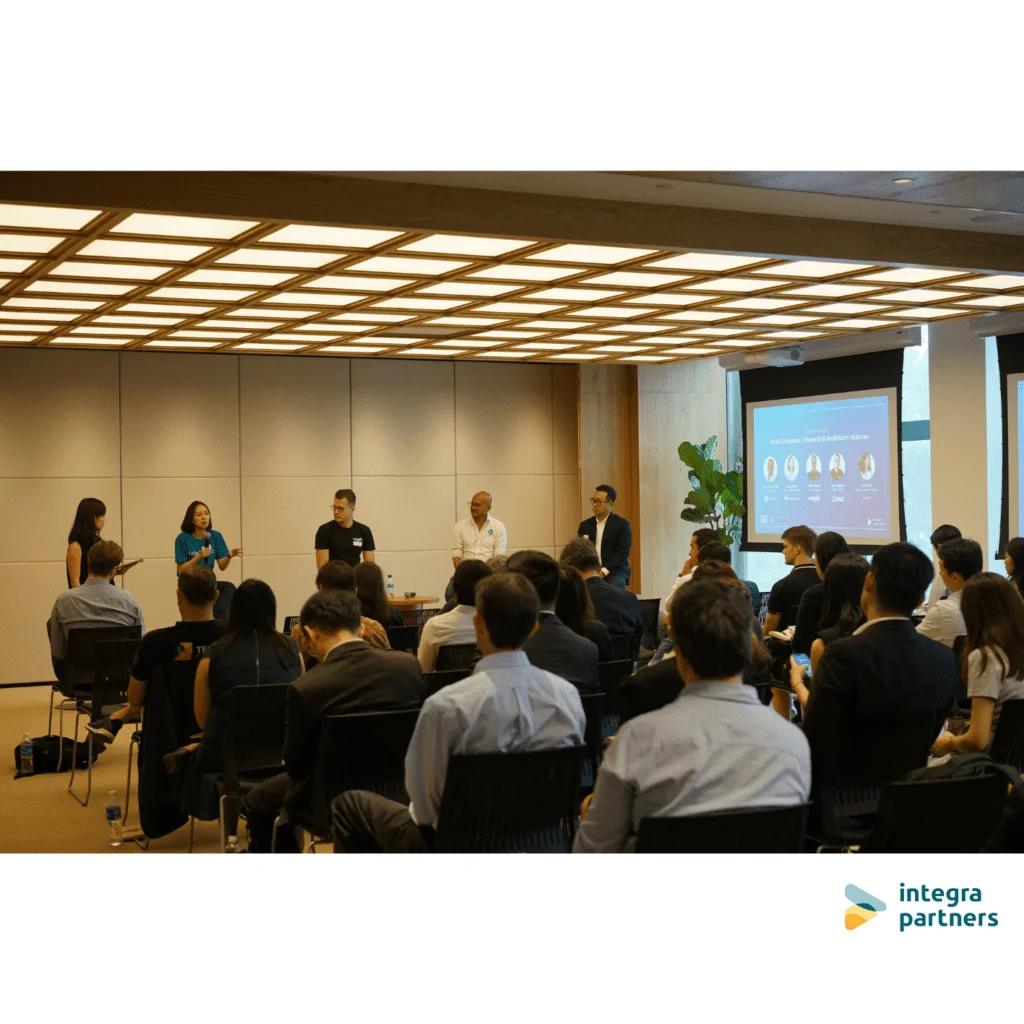
Integra Partners 2022 Investor Day Summary
9 November, 2022
Integra Partners recently held our first post-COVID era in-person event in Singapore for our Annual Investor Day on 22 September 2022. The event brought together panels of asset allocators, founders and thought leaders in the FinHealth space, and was also joined by our existing and prospective investors coming from all over the world. We had various interesting and insightful discussion topics, ranging from macro trends and perspectives of asset allocators, to financial and healthcare inclusion as well as thoughts on the Web3 and crypto space.
Macro Trends and Perspectives of Asset Allocators
We were honored to have asset allocators representing different types of investors — from sovereign wealth funds, development finance institutes, fund of funds to single family offices — to share their insights on investing in today’s macroeconomic climate. The common views shared across the various types of investors were:
- Staying diversified in today’s market environment
- Illiquid asset class is about pacing your deployment and investing for the long-term
- Today is a much better time to deploy vs. the past two years
From a public markets broad index performance perspective, Southeast Asia has underperformed Greater China for many years due to the lack of sizable and listed tech companies that can be included in the indices. However, this is changing as the Southeast Asia tech ecosystem matures in tandem with the rise of digital penetration across the region. All of the asset allocator guest speakers expressed optimism about the region’s growth
The disconnect between public and private market multiples was another key topic raised during one of the panels. It is important to look at this disconnect from two angles — while it is true that the private market continues to lag behind the public market, we also have to remember the investor base of public and private markets are different. Public market investors are largely affected by their cost of financing, hence explaining the correction of the stock markets with respect to rising interest rates. On the other hand, private market investors have raised a significant amount of capital in the past two years and most are still sitting on a high amount of dry powder as the speed of getting deals done in the private markets space is naturally slower. Hence although private market investors have been more selective and raising the bar to deployment, they are still likely going to be net buyers in today’s market environment. That being said, it also depends on how long the bear market lasts. If the bear market or a serious recession goes on longer 1–2 years from now, then the private market should also see further correction.
Our asset allocator guest speakers also offered advice to company founders whom are fundraising. Besides having product-market fit and addressing a large enough market, founders’ ability to execute and to sell are also important desirable characteristics. In the Southeast Asia region especially, investors prefer founders who are comfortable dealing with ambiguity due to the highly diverse nature of the region — consisting of at least 5 investable emerging countries with different languages, cultures, infrastructure and political differences.
Healthcare & Financial inclusion and tech solutions
L to R: Jennifer Ho (Integra Partners), Azran Osman-Rani (Naluri), Levana Sani (NalaGenetics), Tobias Fischer (wagely) and Quan Nguyen (GIMO)
The theme anchoring Integra Partners’ second fund is, of course, driving access and affordability to financial services and healthcare in Southeast Asia. In that vein, we invited four of our portfolio company founders — Azran Osman-Rani from Naluri, Levana Sani from NalaGenetics, Tobias Fischer from wagely and Quan Nguyen at GIMO — to speak about how their companies are contributing to that mission. Some key takeaways:
- B2B2C acquisition focus: All four companies chose the employee benefits route and the B2B2C approach as a core pillar of how they go to market, which comes with the benefit of acquiring and engaging with large numbers of users quickly, but also brings with it the risk of having a product roadmap that becomes beholden to the needs of a large customer. The solution: “land and expand” — start simple with a product that serves a core group of employees, then build adjacent features to address the needs of larger employee populations.
- One key example of this in financial inclusion is earned wage access, which is a simple value proposition to workers who need emergency funding, but serves as an entryway to offer more financial products and services, including savings, investment and insurance.
- Prevention rather than cure: Driving healthcare inclusion is most impactful when the focus is on preventing diseases rather than treating them when it becomes cost-prohibitive to do so. It is help align the interests of patients, payors and providers.
- Data — the new gold: Central to both financial and healthcare inclusion is the issue of data. Access to data like employee salaries and spending habits, or chronic disease risk, is central to the value proposition of all four companies — such as using salary and spending data to design new financial products that better meet the needs of users, or creating prevention and treatment plans for at-risk patients. But with access to data comes issues like privacy and discrimination, for which companies must have a strong framework to navigate responsibly.
At the end of the day, start-ups have to drive returns. Technology can play a huge part in enabling affordable and responsible financial and healthcare services to scale quickly and efficiently — but founders have to leverage these advantages into exit opportunities.
Web3 and Crypto — The fourth wave
L to R: Joshia Kwa (Integra Partners), Rawson Harvey (Reflection Digital), Ian Estrada (XLD Finance)
In line with our theme on asset allocation and inclusion, we had two Web3 native founders in this space — Rawson Harvey from Reflection Digital, a crypto hedge fund and Ian Estrada, founder and CEO of XLD.finance, a B2B2C infrastructure that bridges Web3.0 to traditional regulated financial rails — share with us their thoughts on how they and their peers are allocating capital within Web3.0 in the current macro environment.
From an asset allocation perspective, the consensus was:
- Cash is king: Especially more so in the current macro environment. Even founders in the Web3.0 space are actively keeping the bulk of their own portfolio in cash — aside from investing in their own business.
- Utility first: For the minority of allocators still deploying, it is purely for assets with utility value, such as NFT art pieces that they would own regardless of price volatility.
- Macro over tech: With increasing institutional participation, the price action of crypto is more correlated to macro events than underlying technological events such as the Etherum merge or the Bitcoin halving. The current global macro uncertainty will need to tide over before the next wave comes.
- Reputation matters: A look back at the recent cycle reveals patterns about various individuals and groups within the ecosystem, with some becoming associated with rug-pulls and short term profit taking. Veterans in the space advise long-term investors to avoid projects associated with such actors.
From an inclusion perspective, things are looking more optimistic. Web3.0 technologies are still being used to serve the un(der)served and un(der)banked in developing markets across the region, from reducing friction to access one’s earnings, to cheaper remittance cost and enabling cross-border hiring. While each of these solve a real-world problem, they are still in the early stages of the adoption curve and the solutions themselves are still evolving. We expect to see winners and sustainable models emerging over the next few years.
Conclusion
We are grateful to all of our existing and prospective investors, founders and friends that made time to attend our Annual Investor Day. To sum up the night with a few concluding points:
- The Macro: Despite macro headwinds, Southeast Asia remains relatively attractive with real GDP growth maintaining its pace, inflation very much moderate and the region is on course to reach ~$200B in GMV in 2022. Venture capital deals in Southeast Asia have picked up 24% year-on-year despite a global 5% decline. While most investors and asset allocators are getting increasingly cautious on valuations (with late stage investments more affected than the early-stage space), the disconnect between public and private markets might be here to stay to some extent, depending on how long and deep the bear market lasts.
- Sector Investment Thesis: At Integra, financial services and healthcare remain our core pillars of investment focus. Fintech has been one of the leading sectors in Southeast Asia’s digital economy, with ~35% of all private capital invested in this vertical alone for the year of 2021. Healthtech, though being a more nascent sector in this region, is a sector that is highly adjacent and synergetic with financial services. Under today’s macro environment, we prefer to support the financial and healthcare inclusion theme through B2B2C or B2B businesses given the ability of such start-ups to acquire a long tail of end customers at lower cost and higher LTV-to-CAC ratios. Eventually, in financial services and healthcare, it is also those that can accumulate, manage and leverage data effectively and efficiently that can drive return and lead to good exit opportunities.
- Web3.0: From our perspective, the current crypto-winter has weeded out many of the unsustainable ideas and projects, including some of which previously raised sizable amounts of capital. This frees up talent, resources and attention to the ones solving real problems. For long term investors out there, you can also expect to see more reasonable valuations relative to 2021.
See you next year!
Written by: Jennifer Ho, Partner; Joshia Kwa, Principal; and Melissa Chen, Head of Capital Formation

